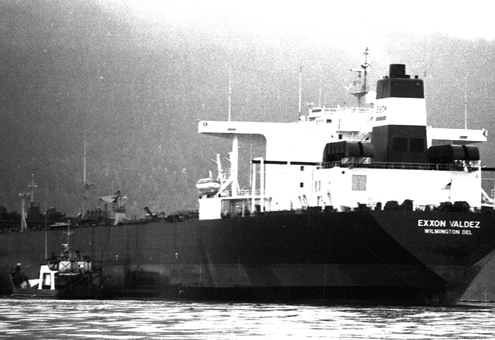 |
|
Mile 1480 - Exxon Valdez |
|
 |
||
The evening of March 23, 1989 was calm, with a little fog, when the Exxon Valdez carrying 211,000 tons of North Slope crude oil departed Valdez. A few hours later, Captain Josesph Hazelwood encountered some ice, not uncommon at that time of year. As the vessel was maneuvered around the ice, the tanker hit Bligh Reef, ripping her single skinned hull open. Within 24 hours some 10 million gallons of crude oil had spread into a slick that covered about 18 square miles. Fortunately, the three days following the grounding were unusually calm—perfect weather for skimming and recovering oil from the surface of the water. Unfortunately, much of the oil spill response equipment promised to be always ready, wasn’t available, and the spill spread far and wide, closing many rich fishing grounds. For many fishermen it was their worst nightmare. Exxon organized and funded a huge cleanup effort that fortunately employed many fishermen and chartered their boats. Since the spill, rules have changed to require double skinned tankers, and a tug escort all the way to Cape Hinchinbrook, but it was essentially closing the door after the horse was gone. The surprising recovery: in Prince William Sound, nature has shown itself to be remarkably resilient. Many affected sea life populations have returned to previous levels and the area appears to be as pristine as it always was. However neither herring nor salmon have returned to pre-oil spill levels. |
||||||||
 |
||||||||
John Van Amerogan photo |
||||||||
 |
||||||||